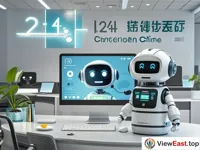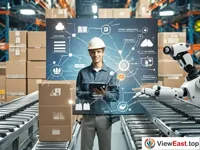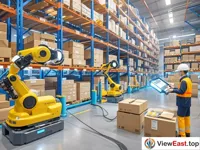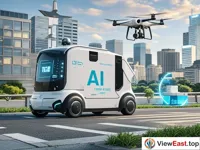






In China, the rapid development of e-commerce has long been a global focus, and the integration of Artificial Intelligence (AI) technology has brought revolutionary changes to this field. From personalized recommendations to intelligent customer service, from supply chain optimization to unmanned warehousing, AI is paving a path of innovation in China's e-commerce sector.
1. Initial Integration of AI and E-commerce
In the early 21st century, with the popularization of the internet, China's e-commerce industry began to sprout. However, the real transformation began with the application of AI technology. In the early 2010s, e-commerce platforms such as Alibaba and JD.com began to explore AI technology to improve user experience and operational efficiency. Through big data analysis, AI can predict consumer behavior, providing merchants with a basis for precise marketing.
2. Personalized Recommendations and Consumer Experience
One of the cores of AI technology is machine learning, which enables e-commerce platforms to provide personalized product recommendations based on users' historical browsing and purchase records. This "thousand-person-thousand-face" shopping experience greatly enhances user satisfaction and loyalty. For example, Taobao's "You Might Like" feature is a personalized recommendation system based on AI algorithms.
3. Intelligent Customer Service and Efficiency Improvement
In the field of customer service, the application of AI is also significant. Intelligent customer service robots can provide services to users 24/7, answering questions and handling returns and exchanges. This automated service not only improves efficiency but also reduces costs. JD.com's JIMI robot is one of the representatives of intelligent customer service, which can understand natural language and provide immediate customer support.
4. Supply Chain Optimization and Cost Control
The application of AI in supply chain management allows e-commerce platforms to predict market demand more accurately and optimize inventory management. By analyzing historical sales data and market trends, AI can help merchants reduce inventory backlog and lower logistics costs. Suning's "Smart Supply Chain" utilizes AI technology to achieve intelligent management of the supply chain.
5. Unmanned Warehousing and Logistics Innovation
In the field of logistics, the application of AI technology is disruptive. Unmanned warehousing systems, through robotic picking and automated packaging, greatly improve logistics efficiency. The use of drones and autonomous vehicles also provides new solutions for last-mile delivery. Alibaba's "Cainiao Network" achieves intelligent and automated logistics through AI technology.
6. Live E-commerce and New Combinations with AI
In recent years, live e-commerce has risen rapidly in China, and AI technology is playing an important role in this emerging field. By analyzing audience interactions and feedback in real-time, AI can provide live hosts with immediate data support to optimize live content and strategies. At the same time, AI can also identify and filter inappropriate content, ensuring a healthy live broadcast environment.
7. Cross-border E-commerce and Global Layout
With the globalization of Chinese e-commerce, AI technology is also playing a significant role in cross-border e-commerce. Through language recognition and cultural adaptability analysis, AI helps e-commerce platforms better serve global consumers. At the same time, AI can also provide intelligent solutions for cross-border payment and currency exchange, simplifying the process of international transactions.
8. Future Outlook and Challenges
Looking ahead, AI technology will continue to drive innovation in China's e-commerce industry. With the development of new technologies such as 5G and the Internet of Things, AI will play an even greater role in the e-commerce field. However, issues such as data security and privacy protection have also emerged, requiring joint efforts from the industry and regulatory authorities to establish corresponding standards and regulations.